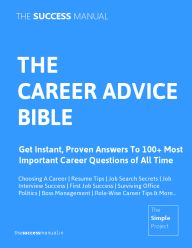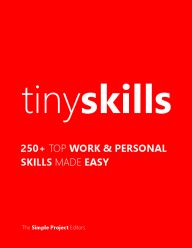On June 21, 2010 By bookguide Topic: Greatbooks, Seth godin, Book summary
Seth Godin says that we are continually bombarded with ads and solicitations that compete for our limited time and attention span. As time is our most precious commodity, we naturally enough resent these intrusions, and will increasingly ignore them, tune out and refuse to respond. Traditional advertising will therefore become more difficult and more expensive, as an increasing number of exposures (frequency and reach) will be required to achieve the same result. Seth says the cycle is a vicious one: more advertising breeds more resentment and less attention paid, which breeds more advertising...and it keeps going on & on. This is Interruption Marketing.
[From the Great Books Series. Also The Success Manual - Encyclopedia of Advice, that contains summaries of 100+ Most useful books.]
Seth's great new idea is Permission Marketing: Where you first ask the potential customer's permission to initiate a relationship, by providing them with something desirable for free, or for very low cost. Then, once a relationship is established, it is gradually strengthened by the customer giving more and more 'permission' to the supplier in return for increasing benefits. (An example of this latter approach would be the Book of the Month Club, where the organization has the customer's permission to send them a new selection and an invoice every month.) In each case, when an exchange occurs between supplier and customer, the relationship is strengthened.
"The heart of Permission Marketing is giving the stranger a reason to pay attention, while Interruption Marketers hold people hostage."
Using Permission Marketing a company can increase the frequency with which it can contact the customer (or potential customer). The customer welcomes these frequent contacts, because they receive some benefit. These contacts breed trust, which then will lead to a sale, or reinforce repeat purchase patterns.
The five levels of permission: From the lowest (i.e. least powerful) to the highest effectiveness,
1. Situation permission: where the customer will allow the supplier to assist them by providing information or assisting with a transaction
2. Brand trust: where the customer allows the company to continue to supply their needs over time with only minimal 'shopping around' because they trust the brand
3. Personal relationships: where the customer's permission is granted because of a personal relationship that the customer has with somebody within the supplier organization
4. Points permission: Here, customers have given the supplier organization permission to sell to them and collect data because they are rewarded with redeemable points or a chance to win a prize if they do so Godin identifies two variants of this permission level: the points liability model, where every point has a real value to the consumer and a commensurate cost to the supplier (as in the airline's frequent flyer programs) and the points chance model, where customers earn more chances to win a reward if they purchase more and/or yield more information to the supplier organization
5. Intravenous permission: Here, the supplier has in a sense 'moved into' the customer's organization, and taken over the supply function for the particular product or service needed the analogy that Godin uses that has given rise to this term is as follows: "This is what you've got going when you're in the intensive care unit with a needle in your arm and a bag of medicine dripping into your veins.
At each successive level of the permission framework, the selling costs to the organization become less.
Businesses must never, not ever, abuse the trust that is bred in a permission relationship by releasing the information collected on the customer. (e.g. selling or renting a mailing list).
This betrayal would destroy the permission contract, and undo all the hard work done in developing the relationship in the first place.
1. Permission is non-transferable: A permission relationship cannot be transferred by a supplier to a third party this is a violation of the trust built up with the customer, and will destroy the relationship: "Contact the great Permission Marketers and ask to rent their list. They'll all turn you down. The reason is simple: Permission rented is permission lost. They can make far more money protecting this asset than they can by destroying it."
2. Permission is selfish: "[In Permission Marketing] the marketer is not in control, the consumer is. And the consumer is selfish. Consumers care very little about you, your company, your products, your career, or your family...You must find a reason for the prospect to pay attention. You have to offer an explicit reward information, education, entertainment, or even cold, hard cash to get the consumer to opt in to the message."
3. Permission is a process, not a moment: As distinct from Interruption Marketing, which tries to grab your attention through impact (noise, images, 'in your face' messages, etc.), Permission Marketing tries to become a dialogue or exchange with the prospect. It is thus a process over time, not a one-time assault.
4. Permission can be cancelled at any time: In Permission Marketing, the customer is in control. They can cancel the relationship at any time, if they feel that they are being mistreated, or that the exchange is not worth their time and attention. And this is good: "Knowing that the end is always a moment away makes the marketer do a better job. Every communication must be crafted with the goal of ensuring it's not the last one."
Permission Marketing starts with Interruption Marketing.
To get the attention of the prospect in the first place, in order to begin to develop a permission relationship, the marketer must somehow intrude upon the awareness of the individual. On the Internet, for example, this would likely be done with banner advertising, a form of Interruption Marketing. Or, for a frequent flyer program, the airline may initially gain attention through a direct mail campaign again a form of Interruption Marketing. Once the prospect's attention has been gained, however, (through the offer of some free benefit, whether it be education or information, a chance to win a prize, entertainment, bribery with cash, or whatever), then the permission relationship can begin.
Permission Marketingis not restricted to Internet-based businesses.
Some industries, and specific companies and products that may benefit from Permission marketing include:
* Selling mutual funds
* Selling cars
* Selling Club memberships
* Selling credit
* The magazine industry
* Hospitals (and suppliers to hospitals)
* E-commerce
10 questions that a company needs to consider when initiating or evaluating a Permission Marketing program:
1. What's the bait? or, how can we initiate a permission marketing relationship with an existing or potential customer?
2. What does an incremental permission cost? In other words, what does the company have to give away to entice the prospect into a Permission Marketing relationship, and what does this cost?
3. How deep is the permission that is granted?
4. How much does incremental frequency cost?
5. What is the active response rate to communications?
6. What are the issues regarding compression? "Do you have a feedback loop and technology in place to increase the bait as its effectiveness begins to tail off?"
7. Is the company treating permission as an asset?
8. How is the permission being leveraged?
9. How is the permission level being increased?
10. What is the expected lifetime value of one permission?

